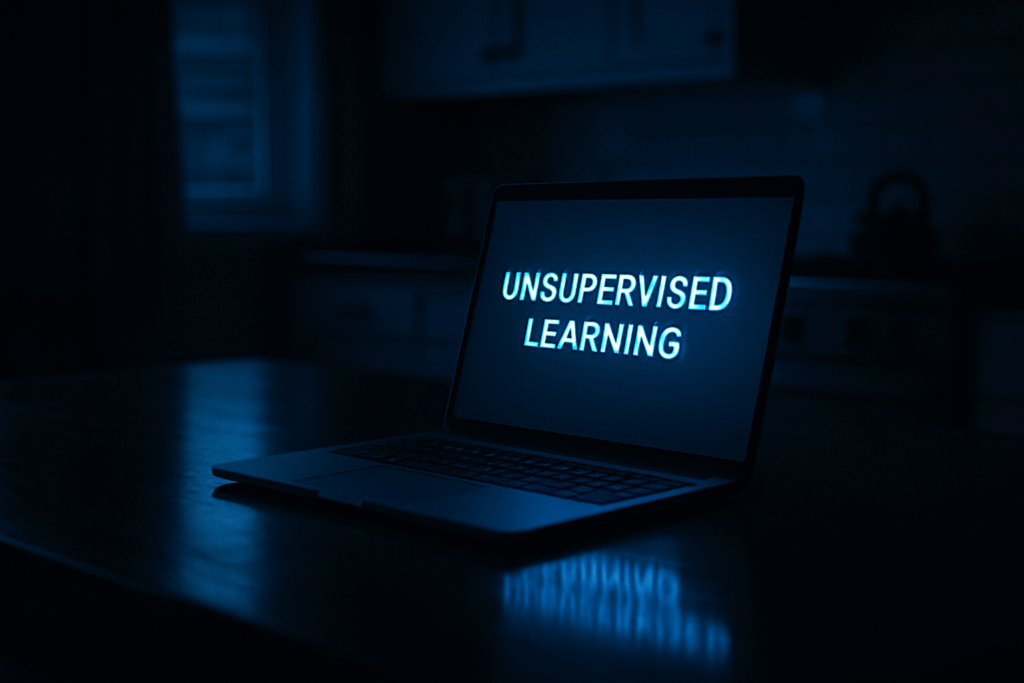What Self Supervised Learning Actually Means
Learning Without Labels
Traditional AI models rely heavily on large datasets with human annotated labels an expensive, time consuming process. Self supervised learning (SSL) disrupts this model by enabling systems to learn from the raw structure of data itself.
Removes the need for manually labeled datasets
Utilizes natural patterns and relationships in data
Makes use of ‘pretext tasks’ (e.g., predicting missing parts) to generate learning signals
How It Differs From Other Methods
To understand self supervised learning, it’s useful to see how it fits alongside other approaches:
Supervised Learning:
Requires labeled data for training
Performance depends on the quantity and quality of those labels
Unsupervised Learning:
No labeled data, but typically focuses on clustering or dimensionality reduction
Limited in terms of complex task performance
Self Supervised Learning:
Bridges the gap by using data to create its own labels
Trains models to understand the structure before applying them to specific tasks
The Big Promise
What makes SSL so powerful? Efficiency and scalability.
Reduces the need for expensive human annotation
Produces models that generalize better across tasks
Supports more robust, flexible systems across speech, vision, and language domains
Self supervised learning offers a pathway to smarter, more autonomous AI without the bottleneck of endless labeling.
Why 2026 Is the Breakout Year
We’ve been drowning in raw data for years images, audio, text, sensor logs but most of it’s been locked behind one brutal bottleneck: human labeling. For traditional supervised learning models, every training example had to come with a tag. Problem is, people don’t scale. You can’t label billions of data points by hand without burning time, cash, or both.
But compute power has been on a tear. The chips are faster. The clusters are cheaper. And now, deeper models are finally viable at a cost that makes self supervised learning practical at scale. Combine that horsepower with clever training methods, and the results start to eclipse older approaches no annotated datasets needed.
2026 is proving to be the tipping point. Self supervised systems are handling more real world complexity across speech, vision, and language. Models are less dependent on curated labels and more capable of pulling structure from chaos. We’re entering a phase where brute force annotation gives way to learning that looks more… human.
How It’s Changing the AI Landscape
Self supervised learning isn’t just clever it’s effective. The gains are showing up loud and clear across speech, vision, and language models. Think voice assistants that understand messy, mid sentence corrections with no special training. Or vision systems that recognize objects in real world chaos, not just clean lab conditions. In language, it’s models adapting to tone shifts, slang, and nuance in ways that supervised models used to struggle with.
What’s different now is transferability. Models trained on one kind of data are picking up use across domains they weren’t specifically trained for. That’s a big leap. It means fewer custom datasets, lower time sinks, and more flexibility for developers. Productivity is up, iteration is faster, and costs are already falling.
This shift doesn’t just make AI cheaper and quicker. It changes who can build. Startups don’t need clouds of labeled data or months of expensive pretraining they can fine tune fast and scale smart. That’s the new edge.
Real World Applications Taking Off

Self supervised learning isn’t just a lab experiment anymore it’s quietly powering major leaps in real world systems. Medical imaging is a prime example. With far fewer labeled samples, AI models can now spot anomalies in scans almost as well as specialists. Fewer annotations mean faster, cheaper development, and in some cases, earlier diagnoses.
In autonomous vehicles, self supervised systems are shortening the learning curve. Instead of relying heavily on hand labeled driving data, these systems process raw video, sensor inputs, and spatial data to understand patterns, context, and edge cases things like predicting a pedestrian’s intent or navigating unfamiliar intersections.
AI assistants are also getting sharper. With better internal footing on context and semantics, self supervised models are learning to follow more nuanced commands, handle ambiguous prompts, and even remember useful information over longer interactions. They’re not just responding they’re adapting.
There’s also significant promise in language, where self supervised models serve as the backbone of smarter translation systems. To see an example of this shift, dig into The role of AI in advanced language translation.
Major Players Pushing the Frontier
Self supervised learning is no longer confined to academic labs some of the world’s biggest tech entities and fastest growing startups are investing heavily to operationalize it. The momentum is coming from both the open source movement and enterprise adoption, making it one of the most collaborative fronts in AI.
Open Source Powerhouses Leading Innovation
Several key institutions are publishing groundbreaking research and contributing tools that drive the space forward:
Meta AI: Known for scaling self supervised techniques in large language and vision models
DeepMind: Pioneering generalizable learning algorithms that improve performance with less data
Hugging Face: Democratizing access through open source transformers and pre trained models for vision, text, and multimodal tasks
These organizations are not just publishing papers they’re releasing code, benchmarks, and pre trained models that fuel community wide acceleration.
Enterprise Giants Embrace Self Supervision
Companies are moving beyond experimentation. AI teams inside major corporations are actively integrating self supervised workflows into live products:
Apple: Utilizing self supervised models for on device intelligence and privacy focused personalization
NVIDIA: Leveraging self supervised learning to improve GPU accelerated training pipelines for vision and robotics
Startups: From healthcare to cybersecurity, nimble companies are using self supervised models to build faster, more adaptable AI stacks
Many of these organizations are reporting significant reductions in labeled data requirements sometimes by orders of magnitude.
Cross Industry Momentum
The adoption of self supervised learning is not limited to traditional tech fields. It’s expanding rapidly across industries:
Finance: Risk models and fraud detection benefit from contextual learning without extensive labeling
Healthcare: Reading X rays or pathology slides more effectively using minimally annotated datasets
Climate Science: Training models that infer weather patterns or predict environmental trends without vast labeled corpora
As more sectors discover how self supervised models adapt and generalize, the technology is moving from proof of concept to mission critical.
Challenges Still on the Table
Self supervised learning is powerful, but it’s not magic. The biggest red flag? Data bias. Because models learn directly from massive swaths of uncurated content text, images, audio they absorb whatever patterns are present, including the subtle (and not so subtle) human biases baked into our digital world. The result: models that might perform technically well but still reinforce stereotypes or false assumptions.
Validation is another hard wall. Without ground truth labels, it’s tough to benchmark performance cleanly. Developers often rely on proxy tasks or downstream measures, but these don’t always tell the full story. A model might be great at matching patterns, but is it understanding anything useful? That’s much murkier.
Then there’s the trade off between building bigger models and keeping them interpretable. The more you scale, the better they perform on paper. But try explaining why a 10 billion parameter model made a specific prediction, and you hit a wall. That’s becoming a sticking point, especially in regulated industries where accountability isn’t optional.
In short: self supervision offers raw power, but it brings new challenges that can’t be ignored. Ethical training, smarter validation methods, and transparency are now part of the frontier.
What’s Coming Next
The next wave of self supervised learning is all about flexibility and range. Hybrid models ones that blend self supervised techniques with few shot learning are starting to pull ahead. They combine the efficiency of self supervision (learn from raw data) with the adaptability of few shot (learn from just a handful of examples). The result? Smarter AI with quicker ramp up times and less dependence on massive manual datasets.
Even more exciting: new models are learning to handle entirely unfamiliar data without needing retraining. These systems don’t just recognize patterns they generalize them. We’re moving from narrowly tuned AIs to systems that can shift gears on the fly. From recognizing cats in YouTube thumbnails to processing satellite imagery or codebases without needing a fresh batch of labels.
It all leads toward the big prize general purpose intelligence. That’s AI that doesn’t need to be babysat for every single task. The kind that can jump domains without falling apart. It’s still early, but the architecture is changing, and the signs are clear: we’re inching closer to machines that can learn how to learn. That opens the door to tools that are reliable, scalable, and surprisingly independent.
Final Word: Why It Matters
We’ve hit a real turning point. Self supervised learning isn’t just another buzzword it’s a shift in how machines learn, grow, and scale without constant hand holding from humans. By pulling in patterns directly from raw data, these models are cutting the cord from labeled training sets, which were both expensive and limited in scope. It means AI development is becoming faster, sharper, and less dependent on human bottlenecks.
This change also forces a new kind of responsibility. With fewer people in the loop steering training data, there’s more pressure to make sure the systems we build are fair and accountable. But it also opens new doors: training massive, useful models without breaking budgets or timelines. Everything from climate science to drug discovery moves faster when AI can teach itself new tricks.
If 2023 was the year of large language models grabbing headlines, 2026 is about giving those models the tools to go off script. Self supervised systems are starting to learn their own lessons and that’s a future worth paying attention to.
